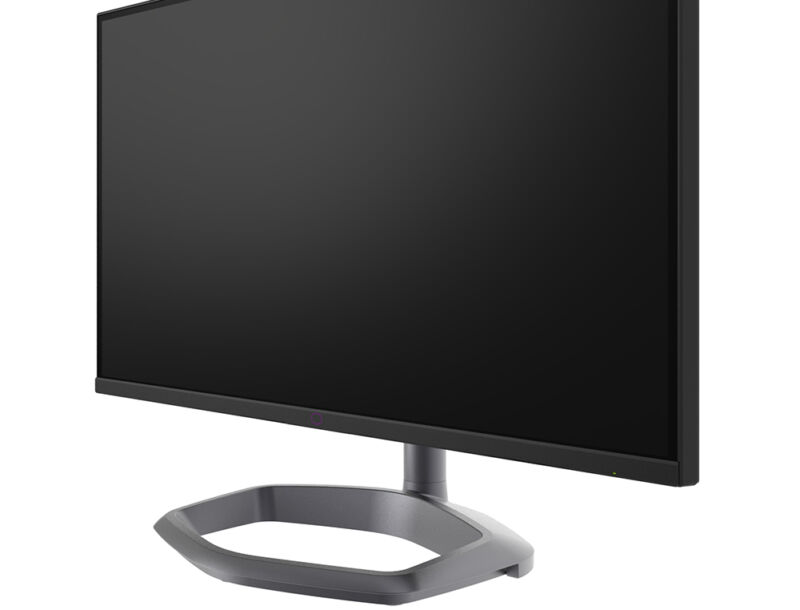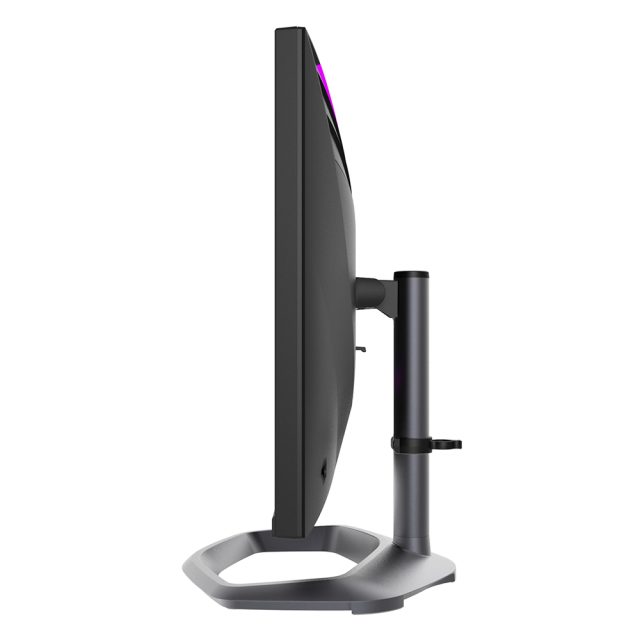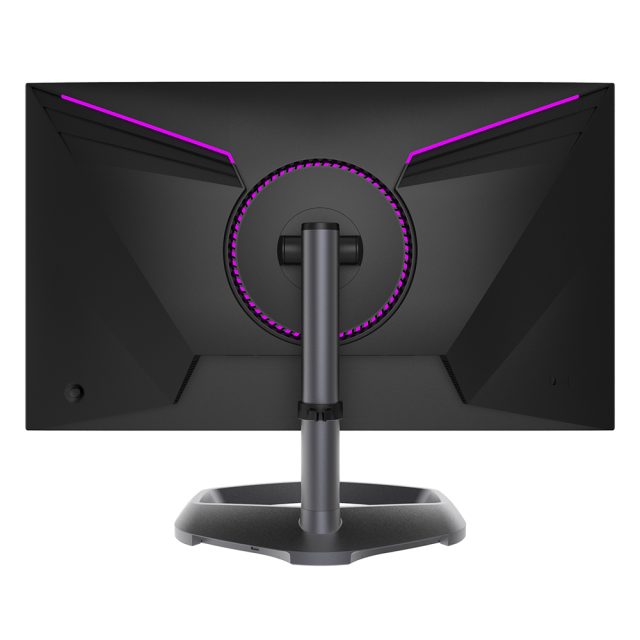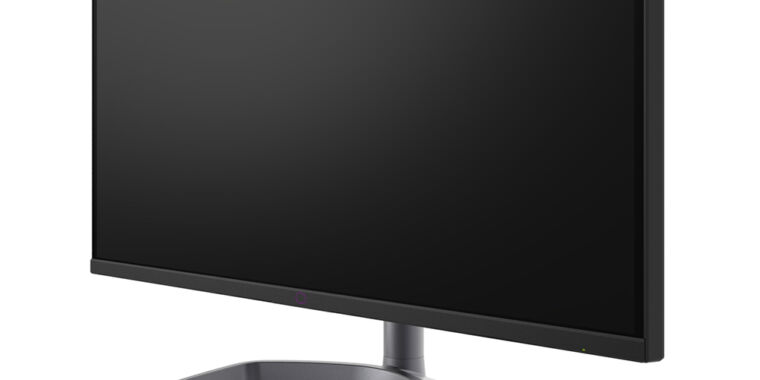
OLED is so popular among shoppers seeking high-end image quality that its acronym is expanding (see: QD-OLED). But in PC monitors, OLED means limited size options and lofty prices. Mini LED is a strong alternative but has long carried high price tags as well, partially due to the devices being so frequently marketed to creative professionals. But with this week’s mini LED PC monitor announcement, the technology is getting cheaper than ever.
Mini LED monitors can fit more LEDs into their backlight because each individual light-emitting diode in a Mini LED monitor is about half the size of the diodes in regular LED monitors. In a full-array local dimming (FALD) monitor, which has independently controlled lighting zones, this should lead to greater contrast, since the display has greater control over brightness in differing areas of an image. Contrast, however, won’t be as extreme as what you can expect from OLED.
The Cooler Master GP27-FQS monitor will come out some time between late Q2 and early Q3 with an MSRP of $699. However, a Cooler Master representative told Ars Technica that there will “most likely” be sale prices “closer to $550.”
Even at its expected MSRP, the GP27-FQS should be the cheapest mini LED monitor. The current holder of that title appears to be the $2,000 Asus ProArt PA27UCX-K. It’s a 27-inch IPS monitor with 576 local dimming zones, a 60 Hz refresh rate, and 3840 x 2160 resolution. Today’s mini LED options go all the way up to the famously priced Apple Pro Display XDR, a 32-inch 6K screen with a $5,000 starting MSRP.
You might expect moving away from the creative professional side of tech, which tends to be expensive, to yield more affordable monitors. But today’s nonprofessional mini LED options are still expensive due to their extreme refresh rates. Asus’ ROG Swift PG32UQX has a $3,000 MSRP but is available as of writing for $2,900. There’s also the massive Samsung 49″ Odyssey Neo G9 G95NA, which you can find for $2,200.

Cooler Master
The GP27-FQS should also hold a price advantage over upcoming mini LED monitors, including the pile of nonprofessional products announced at CES last month. For example, Acer plans on releasing the Predator X32 FP mini LED monitor in Q2 for $1,800.
Why so cheap?
One obvious reason for the GP27-FQS’ lower price is that it has 2560 x 1440 resolution rather than 4K and is 165 Hz. AOC’s upcoming 170 Hz AG274QXM is also 1440p but was announced at about $450 more than the GP27-FQS.
The GP27-FQS also doesn’t employ any flavor of Nvidia G-Sync, which often comes at a cost. (The GP27-FQS does use AMD FreeSync Premium, and you can typically get G-Sync monitors to run on such monitors unofficially with varying results).
Cooler Master’s lower-priced mini LED monitor also has 576 local dimming zones. There are FALD monitors and TVs with fewer zones, but you can also find mini LED monitors with over 1,000 zones. The aforementioned Neo Odyssey Neo G9, for example, has 2,048.
More local dimming zones results in greater dynamic range and control over how different parts of an image look. That means you can have an image that’s very bright in patches but still has strong blacks in others. With OLED, every pixel is like its own zone, so if you’re considering mini LED as an OLED alternative, more zones is especially important.
As of writing, Cooler Master’s upcoming mini LED monitor doesn’t have any VESA certifications around its HDR delivery, which many competitors have.
Cooler Master also announced a 4K 160 Hz version of this monitor, the GP27-FUS. This device is also cheaper than other mini LED monitors. With similar specs to the GP27-FQS, save for a bump to HDMI 2.1, the monitor will cost $1,100 when it debuts alongside its lower-res sibling.
Brighter than OLED
A benefit mini LED has over OLED is that it’s generally brighter. The GP27-FQS claims to hit up to 1,200 nits, which it does with HDR content. With SDR content, you can expect a max brightness of 600 nits.
Colorwise, the monitor claims 97 percent DCI-P3 coverage with the help of quantum dots. That’s not quite on par with what QD-OLED, a purportedly more colorful type of OLED that also uses quantum dots, claims. (Meanwhile, Alienware’s AW3423DW claims 99.3 percent.) But the GP27-FQS still has a wide color gamut.

Cooler Master
Outside of image quality, a monitor’s price is affected by its feature set. The GP27-FQS has a pair of 2W speakers, USB Type-C connectivity (90 W power delivery), plus two HDMI 2.0 (rather than the latest HDMI 2.1) ports, DisplayPort 1.4, two USB-A ports, and a USB-B. There’s also lighting on the panel’s backside.
Listing image by Cooler Master








